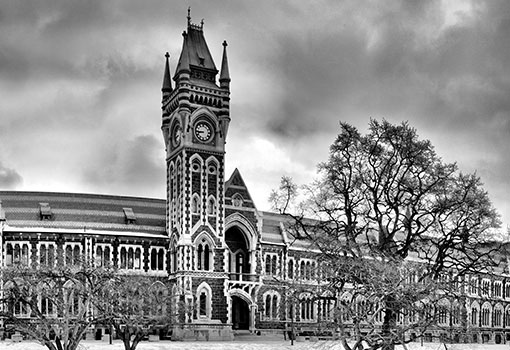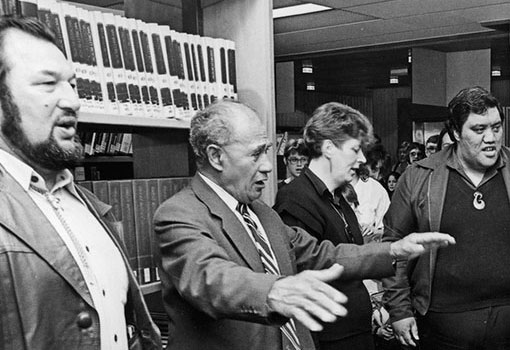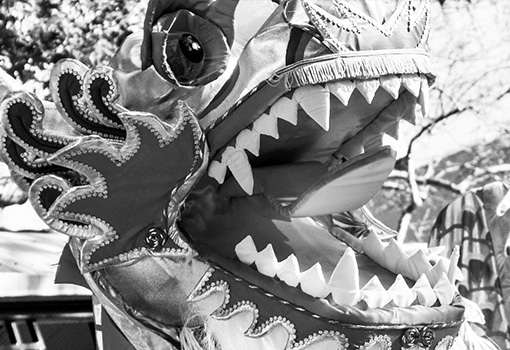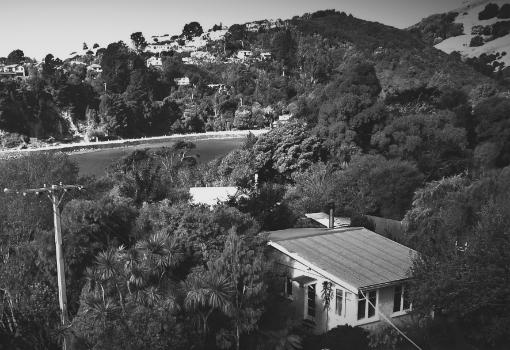
Janet Frame's debut novel retold for the theatre
By Linda Herrick | Posted: Wednesday Oct 02, 2019
The creators of a stage version of Owls Do Cry explain how their non-literal retelling pays tribute to Janet Frame’s original.
Never has a surname seemed more apt than the “Withers”, the family central to Janet Frame’s spectacularly imaginative debut novel, Owls Do Cry.
First published in New Zealand in 1957, the novel features husband and wife Bob and Amy Withers (who refer to each other asexually as “Mum” and “Dad”), and children Francie, Toby, Daphne and Chicks, who range in age from teen to toddler.
Doomed, all of them. Residing in the small fictional South Island town of Waimaru, the woeful Withers collapse – one by one – under the weight of poverty, boredom, illness and loneliness. One of the kids dies young; one is epileptic; another is locked up for being “insane”. The fate of the surviving three is heart-breakingly banal.
As Frame pushed at a narrative that leapt from the first tragedy to 20 years later in the life and times of the Withers, she pioneered a style that was bold, surreal and unsparing, all the while exploring the terrors of suburbia.
Owls Do Cry was – and remains – confrontational, lively and, at times, very funny. But at its heart, Frame displayed a great tenderness for each member of her very ordinary family.
Sixty years on, the book, which has become a New Zealand literary classic and remains in print around the world, continues to induce a lump in the throat. But, while still fiercely disturbing, it is firmly fixed in the 1950s. Frame wrote the book while living at Frank Sargeson’s house in Takapuna in 1955-56.
Its timeframe posed a fundamental challenge for West Auckland-based Red Leap Theatre founder-director Julie Nolan, who is bringing Owls Do Cry to the stage after negotiating with Frame’s niece and literary executor Pamela Gordon.
“I was wanting the rights to maybe [Frame’s autobiography] An Angel at My Table, and through our conversation Pamela kept bringing up Owls Do Cry, and that no one had ever done it,” she says during a break in rehearsals at the Corban Estate Arts Centre in Henderson, where the theatre group is based.
“I had read it at university. It had a really big impact on me but I couldn’t remember what that was. So, at the end of our conversation, I told her I was going to give her a pitch for Owls. I didn’t re-read it. I told her it would be very much in the style of Red Leap: visual, physical, non-literal, non-narrative, but seeking the themes of the book, seeking the undercurrent.
“She accepted the pitch, then I read it and I was like, ‘What have I done? How could we possibly make it?’”
Initially, Nolan and her team – a co-operative powerhouse of director and choreographer Malia Johnston, Toi Whakaari’s training director Heather Timms, who is dramaturg, and designer Penny Fitt – approached the work as a period piece, faithful to the book’s 1950s locale, which was crammed full of domestic artefacts.
“We tried to create the Withers family really literally and that absolutely didn’t work,” says Nolan.
“We were bringing in all those elements [of physical objects],” adds Johnston. “We realised we had a room so full of things that it was a big weight on us as theatre-makers. So we got rid of it all. We got rid of the clutter and started working as artists on our own practice in response to the book. And that became liberating.”
Now, says Nolan, Owls Do Cry on stage is intended as a waiata, a tribute to Frame’s work, but set in today’s world. It is “absolutely not literal” but holds true to its timeless concerns.
Says Johnston: “All of her issues to do with poverty, mental illness, landscape, environment and consumption are relevant today.
“So that’s the thing stirring up what, in these performers – in their lives and voices on the floor – is actually real for them. So they are not going, ‘This is from 60 years ago, I have no experience of that time.’ Instead, they’re saying, ‘I can relate to these concepts from now.’”
The six cast members have also been adding their own perspectives to what the play articulates. “They are playing more than one role and playing themselves as well, so they have the opportunity to comment on the work,” says Nolan.
“It’s free-ranging, like the book, which was [Frame’s] stream of consciousness. We are emphatic: it won’t be your classical three-act play. And it’s not nostalgic. If someone comes expecting a literal retelling of the novel, they’ll be very surprised. The novel was done, and it was done beautifully. It’s our job to elevate it … we are also definitely making an attempt to put some lightness into the work, to balance the weight of the book.”
Live music adds another dimension to the production, with compositions by Eden Mulholland set to words from the book that have been adapted by the performers.
“We found pretty early on that the words of Frame’s book are very beautiful translated into song,” says Nolan. “Eden is responding to the music we found early on. We have about 20 songs, but they won’t all be in the show. The performers wrote them very fast and effortlessly in the first week. There are all sorts of different forms – a bit of rock, country, an ode.”
Song also accompanies a pivotal trauma, the sudden death of one of the children. In the book, Frame writes, “No one can describe exactly what happened, but it happened.”
Here, says Nolan, the death will be expressed through movement, song and light. “We wanted to lift the weight of feeling we had to show a death in a literal way,” she says. “It’s an impossible task, so we are coming at it from a completely different angle … we leave enough space for the audience to put their own story and feeling to it.”
Daphne’s perceived madness is another issue confronted in the novel, with a lengthy account of her institutionalisation written from her perspective. Daphne’s story has often led to the mistaken – and thoroughly debunked – view that it was based on Frame’s own experiences after she was misdiagnosed as schizophrenic and routinely institutionalised when she was in her twenties.
Daphne’s predicament threads through the entire show, says Johnston. “The whole work speaks to that, in a way, so we tumble it around. It is coming and going through the way things are played out and broken.
“We also had a big discussion about how to address that territory when you don’t have that experience yourself.”
Nolan says Owls Do Cry has presented Red Leap with a new way of working, which, for a company that has specialised in innovative multimedia productions such as The Arrival, Dust Pilgrim and Paper Sky, is an accomplishment.
“In terms of even the positions within the company, it is completely new,” says Nolan. “We’ve got four women holding the feeling of the work, but rather than pulling in a writer or a choreographer, we are all right at the centre, and then people work out to their expertise.
“It is challenging and hard. Actors love to have a clear set of intentions; this is how they train. We are going, ‘We don’t know the purpose of that yet and until we see the shape, we are asking you to keep going and give us more energy.’
“When they go, ‘I made this,’ they are going to feel so good. It’s way better than being told what to do and what to think.”
The play debuts at the Waitaki Arts Festival in Ōamaru, where Frame lived for some years as a child, on October 4 and 5, before moving on to Auckland’s Q Theatre.
Gordon will attend the opening night in Ōamaru but Nolan and Johnston are so invested in the show, creatively and emotionally, they also feel the production just might have a special unseen presence.
“We do have a real sense of Janet Frame, a sense of her blessing, in a weird way,” says Johnston. “Sometimes I think to myself, when it gets pretty wild on the floor, ‘Oh, she’d love this,’ when we are shoving at things with our elbows and pushing things out.”
Says Nolan: “She craved to be free and the liberation of the imagination was her thing. She talked about the freedom that lies beyond the horizon of words and I feel like the wilder it gets, the more she will think, ‘Hell yeah, go for it.’”
Owls Do Cry, Waitaki Arts Festival, Ōamaru Opera House, on October 4 & 5; Q Theatre, Auckland, from October 17-November 2.
This article was first published in the October 5, 2019 issue of the New Zealand Listener.



